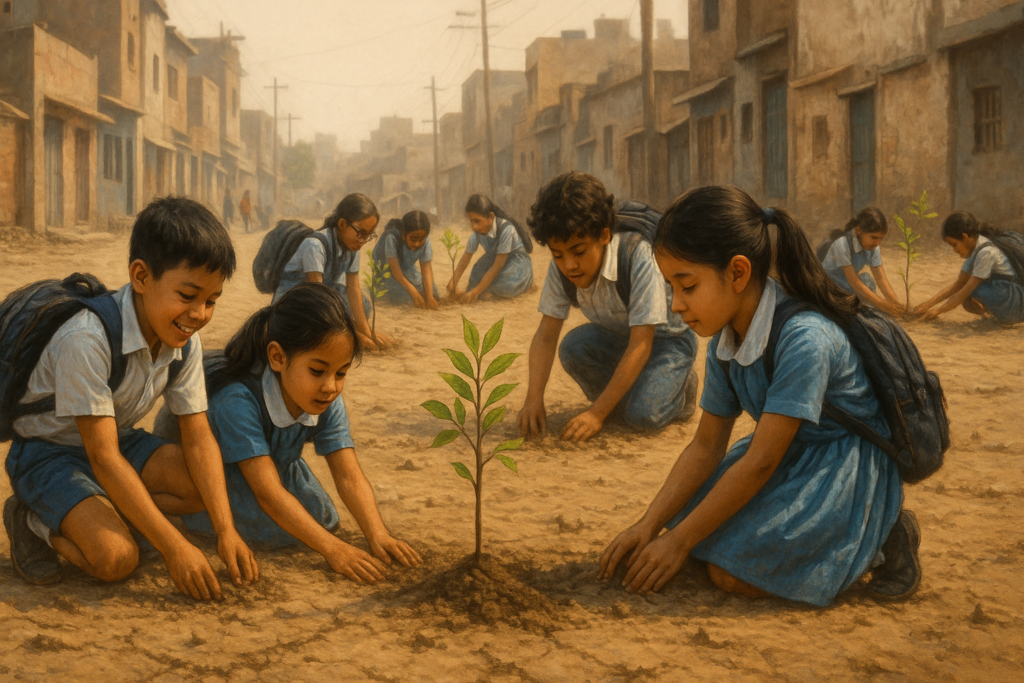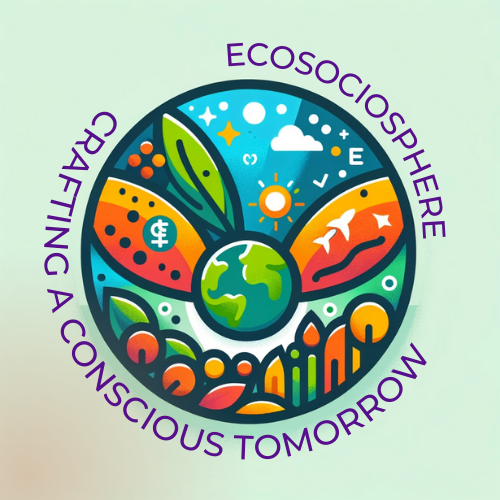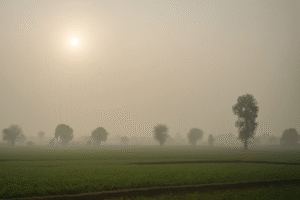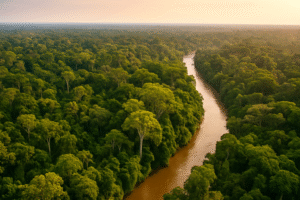Fun Fact: The American Psychological Association (APA) officially recognised “eco-anxiety” as a legitimate psychological condition in 2017.
You’re not imagining it. The tightness in your chest when you read about forest fires, the guilt when you forget your cloth bag, the dread that creeps in when monsoon patterns shift—it has a name. It’s called eco-anxiety.
In this blog, we explore “Eco-Anxiety Is Real—But So Is Eco-Hope,” a deep dive into the psychological impact of climate change and how we can shift from despair to action. Because while doomscrolling might make you feel helpless, there is another side to this story—and it’s powered by resilience, innovation, and millions of people refusing to give up.
This isn’t just about carbon footprints. It’s about emotional footprints. And how we walk forward anyway.
What Exactly Is Eco-Anxiety?
Eco-anxiety refers to the chronic fear of environmental doom. It’s not classified as a clinical disorder yet, but its symptoms are very real: insomnia, helplessness, panic, grief, anger, and even existential dread.
A 2021 global survey by The Lancet found that 59% of youth felt extremely worried about climate change. More than 45% said these worries negatively impacted their daily life and functioning.
In India, climate-induced stress is compounded by visible, local changes—rising temperatures, air pollution, unpredictable rains, and water scarcity. It’s not just a global issue. It’s in our homes, lungs, and crops.
What Does Eco-Anxiety Feel Like?
Eco-anxiety isn’t loud. It simmers. It’s the background static of modern consciousness.
- When you see a child drinking from a plastic bottle, you feel a pang of guilt.
- When Diwali fireworks make you anxious instead of joyful.
- When you read about Arctic melt, you wonder what kind of world your children will inherit.
It can be subtle. Or it can spiral into full-blown despair.
But here’s the twist: feeling eco-anxiety isn’t a sign of weakness. It’s a sign that you’re awake.
Case Study: The 16-Year-Old Who Couldn’t Sleep
Take Priya, a Class 11 student from Pune. After a school seminar on climate change, she started staying up late researching melting glaciers and dying coral reefs. Eventually, she developed insomnia and stomach aches.
Her parents thought it was just exam stress—until a counsellor linked it to “climate grief.” She didn’t need medication. She needed hope.
She joined a local clean-up group. “I still get anxious,” she says. “But now, I also get things done.”
This shift—from helplessness to action—is the heart of eco-hope.
The Birth of Eco-Hope
Eco-hope isn’t blind optimism. It’s radical resilience. It’s the decision to face facts and still believe that change is possible.
While eco-anxiety is rooted in fear, eco-hope is rooted in connection—to the Earth, to each other, and to solutions.
Eco-hope is:
- The farmer in Maharashtra using regenerative practices to restore the soil.
- The Delhi residents forming carpool clubs to reduce emissions.
- The teenager in Shillong building seed banks to protect biodiversity.
This isn’t wishful thinking. It’s strategic, practical, and necessary.

The Role of Media: Fear vs. Fire
Let’s talk about how the media plays a part. Headlines scream catastrophe:
“Cities Will Be Underwater by 2050!”
“1.5°C Warming Tipping Point Crossed!”
“Mass Extinctions Incoming!”
While it’s important to stay informed, this constant onslaught fuels despair. What we often don’t see are the success stories.
Like how Costa Rica runs nearly 100% on renewable energy. Or how Rajasthan’s Bhadla Solar Park is one of the largest in the world. Or how ReMaterials (an Indian startup) is turning agricultural waste into affordable roofing for slums.
We need a new kind of journalism—one that doesn’t just point out the fire, but also the people carrying buckets.
Tools to Navigate Eco-Anxiety
You don’t have to wait for systemic change to feel better. Here are some science-backed ways to manage eco-anxiety:
Connect with Nature
It sounds obvious, but walking in a park, tending a plant, or watching birds can calm the nervous system and restore perspective.
Take Local Action
Organise a cleanup, compost your waste, or talk to your neighbours about saving water. Agency reduces anxiety.
Set Media Boundaries
Limit doomscrolling. Follow eco-positive accounts like Earthrise Studio (a creative climate communications collective) or The Better India (a media company focused on solution-based stories).
Talk About It
Share your feelings with friends or counsellors. Naming the emotion is the first step in managing it.
Join a community
Movements like Fridays for Future (founded by Greta Thunberg) or Youth Climate Collective India provide both solidarity and momentum.
Flip the Script: From Carbon Footprint to Handprint
We’ve spent years being told to measure our carbon footprints. But what if we also measured our handprints—the positive impacts we make?
- Every sapling you plant.
- Every conversation you spark.
- Every product you don’t buy.
- Every letter you write to your local leaders.
Hope isn’t passive. It’s built, action by action.
Why Eco-Hope Is Urgent in India
India is both vulnerable to climate change and critical to its solution.
From Ladakh’s glacial retreat to Chennai’s water crisis, climate stress is visible. But so is climate innovation—from bamboo architecture in the Northeast to solar-powered irrigation in Gujarat.
As the world’s most populous country, what we do—or don’t do—will echo globally. The choice isn’t between fear and denial. It’s between paralysis and purpose.
Conclusion: Hope Is a Discipline
Eco-anxiety is real. But so is eco-hope.
Feeling overwhelmed doesn’t make you weak—it means you care. But caring alone isn’t enough. We need to channel that concern into collective, courageous action.
As the writer Rebecca Solnit says, “Hope is not a lottery ticket you sit on the sofa holding. Hope is an axe you break down doors with.”
Pick up your axe. The planet needs builders, not just worriers.
Author’s Note
Eco-anxiety is an increasingly recognised response to the overwhelming scale of environmental challenges. This blog aims to highlight both the emotional toll of climate change and the actionable sources of hope emerging across communities. By understanding this dual reality—fear and resilience—we can foster a more balanced, empowered approach to environmental responsibility.
G.C., Ecosociosphere contributor.
References and Further Reading
- The Lancet Study on Climate Anxiety in Youth
- American Psychological Association: Mental Health and Climate Change
- Intentionally Designed Endowments in 2017 – Intentional Endowments Network. https://www.intentionalendowments.org/intentionally_designed_endowments_in_2017




